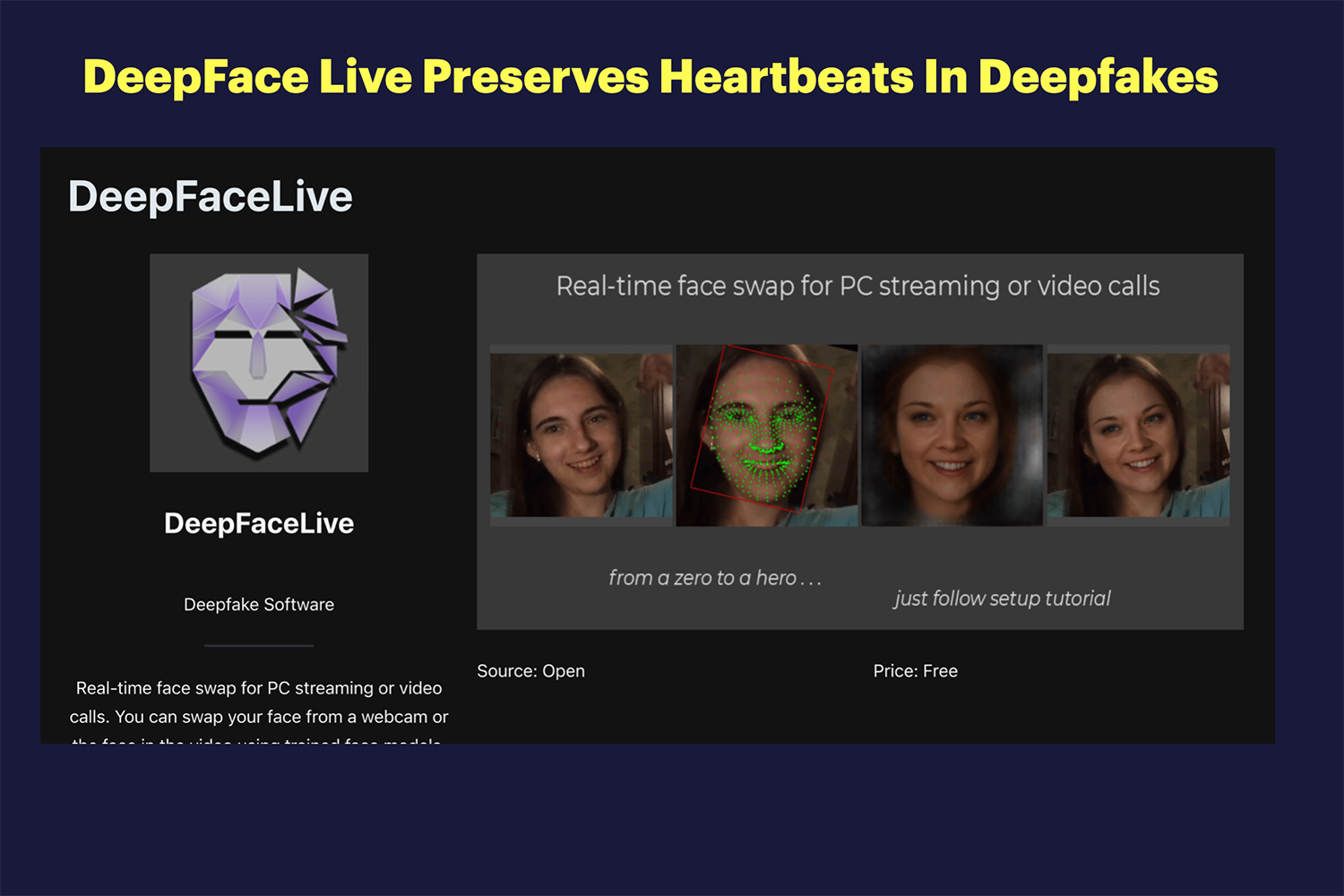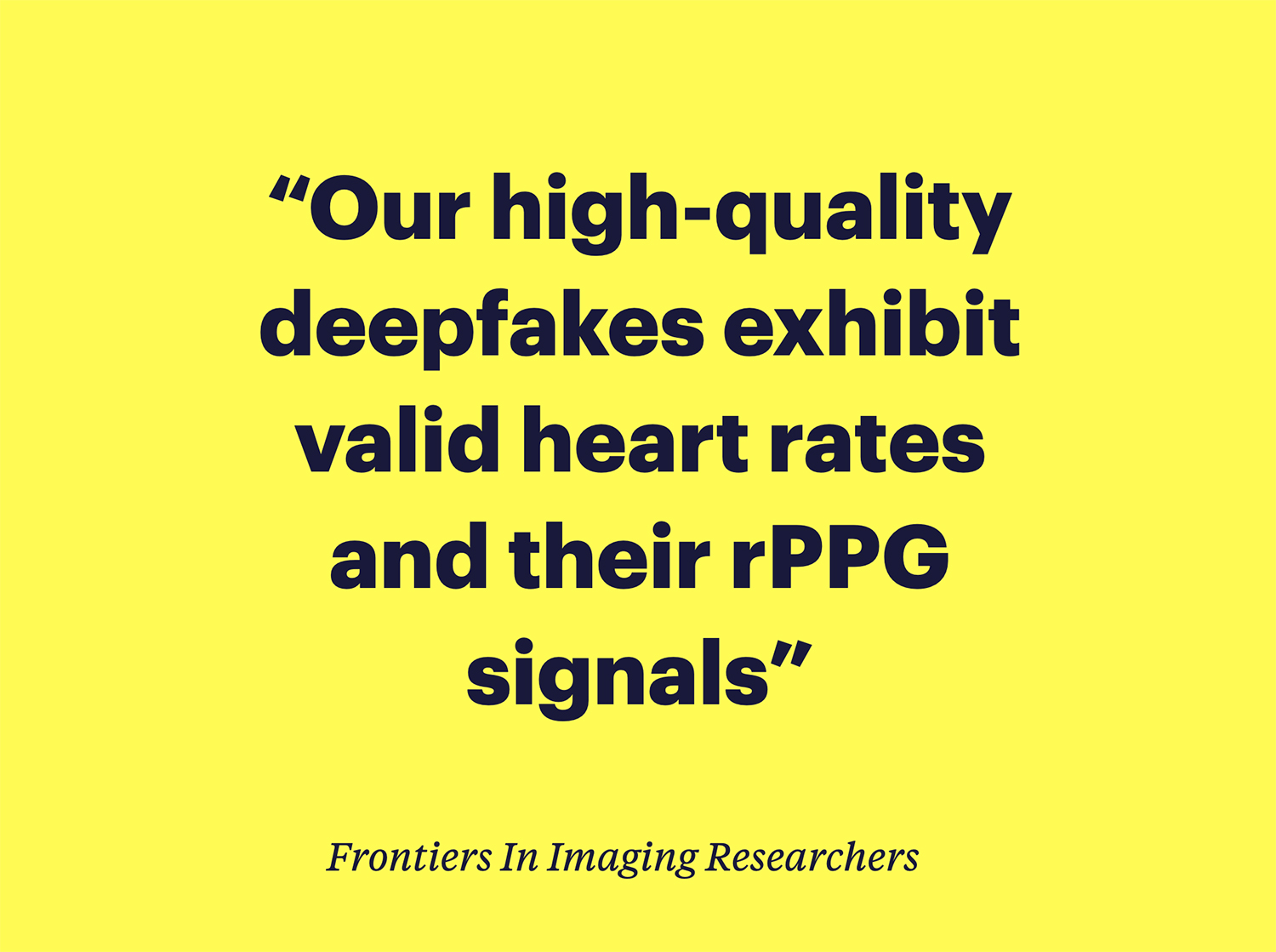AI deepfakes are getting so good at capturing all the details, and I mean everything.
A new study from German researchers challenges what many experts have believed will be the key to detecting deepfakes – heart detection.
They claim that high-quality deepfakes can now replicate human heartbeat signals, making a critical detection method virtually useless.
The study called High Quality Deepfakes Have A Heart shows that the best deepfakes are becoming almost entirely undetectable and one of the best at replicating those heartbeats was the recently released Deepface Live.

Pulse Variation Is Preserved From Source Video
Scientists have believed that deepfake videos lacked one crucial biological signature – skin color variations. Humans skin has subtle variations based on their pulse and deepfakes could never replicate it.
The signal of this variation is called remote photoplethysmography (rPPG), and it was always the best way to detect a deepfake from a real image. But now that signal doesnt work. Frontiers in Imaging revealrs that new advanced deepfakes actually preserve those heart related signals from the source videos which makes them 100% undetectable.

Heart Signals Transferred, Not Created By The Deepfakes
“Here we show for the first time that recent high-quality deepfake videos can feature a realistic heartbeat and minute changes in the color of the face, which makes them much harder to detect,” says Peter Eisert, a professor at Humboldt and the study’s lead author told Popular Science.
The study which was conducted by researchers in Germany tested multiple deepfake generation techniques against videos where the actual heart rate was measured with medical equipment.

The findings shocked them. When they looked at the deepfakes, researchers could detect the heart rates that closely matched the videos that were used to create the deepfakes.
Their conclusion? The deepfakes were so perfect that they were able to detect this nearly invisible subtlety and copied it into the deepfake.
Deepface Live Was Able To Match The Heart Rate Signals
The research team developed a way to extract and analyzing the heart-related signals from videos. Their approach compensated for “facial movements and background noise” to isolate the subtle skin color changes caused by a heart beat.
They determined that Deepface Live in particular was ver good and picking up the valid heart rate and recreating it in the deepfake.
Deepface Live Fooled Thousands
Deepface Live which launched last year stunned the world when a livestream deepfake of Elon Musk attracted tens and thousands of participants who believed they were interacting directly with him.
A New Wave Of Undetectable Fraud
This breakthrough has some serious ramifications for fraud prevention. F
Banks and Financial Institutions increasingly rely on “liveness detection” to verify identity during video calls or authentication processes. These advanced systems often analyze these heart-related signals to determine if they’re seeing a real person or a recorded video. With these signals now present in deepfakes, criminals could potentially bypass those KYC controls.
“Previous research assumed that the subtle heart-beat-related signals get lost during the deepfake generation process, making them useful for deepfake detection,” the researchers note. “However, this paper shows that this assumption is no longer valid for current deepfake methods.”



